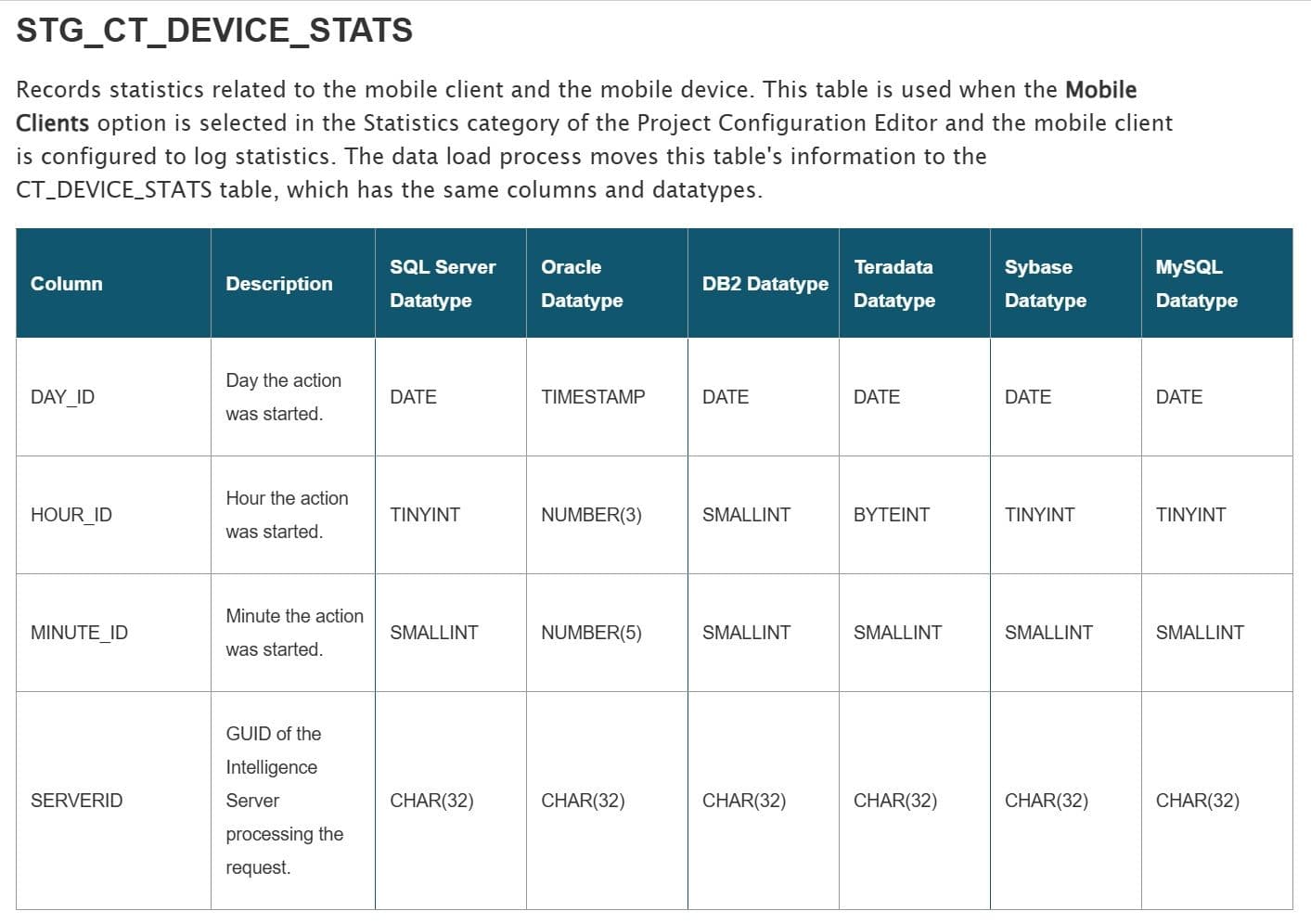What is a data dictionary? The main components and benefits, plus examples

A data dictionary is a comprehensive document that stores information about data types and data elements to support cooperation and clarity across departments and between stakeholders. By creating a data dictionary, businesses supply their data management and data users with a clear understanding of the vision and utilization of their data.
In this article, we will explain data dictionary benefits and components, as well as teach you how to easily build a data dictionary for your own business.
Data dictionary definition
A data dictionary serves as a compilation of attributes and data definitions for data elements and field names within a database. The primary role of a data dictionary is to supply your data models with pertinent context, enabling your stakeholders and database administrators to gain a deeper understanding of the fundamental business glossary enclosed in your data warehouse. A data dictionary exists as a standalone document offering detailed metadata and crucial information.
Understanding the purpose of a data dictionary
As data models continue to evolve and become more intricate, encompassing numerous data objects and fields, the challenge to comprehend these data definitions escalates. Suppose your information system houses multiple customer terminologies such as LTV, MRR, churn rate, active workspaces, playlists, and so forth. In that case, a data dictionary serves as a handy tool, offering a concise explanation and summary for each of these data elements. The principal role of a data dictionary is to act as a single source of truth for all your business rules. This approach aids in curtailing inefficiencies, enhancing data quality and data integrity, and ensuring alignment between database administrators and business stakeholders. It's also an essential component of effective data management and data governance, ensuring that your database management systems operate optimally.
What is a data dictionary?
To demystify the meaning of data dictionary databases, it helps to first understand what data dictionaries are not. Data dictionaries are often mentioned at the same time as data catalogs, business glossaries, and data models. While all of these play fundamental roles in business data management, they are ultimately unique data management tools. So, what’s a data dictionary in relation to a data catalog, business glossary, or data model?
Data catalog vs data dictionary
Data catalogs offer a large-scale view of organizational data, while data dictionaries offer a hyper-focused view.
A data dictionary database is a standalone document that includes information on technical metadata (such as field names, formats, data types, and descriptions) for a specific database. Meanwhile, a data catalog is a centralized platform where tools contextualize data assets across an entire data ecosystem, including technical, business, operational, and governance metadata.
A well-structured, searchable data catalog provides broad insight into data locations, lineage, and relationships, improving metadata management, discoverability, accessibility, and governance.
Business glossary vs data dictionary
A business glossary is a curated document that defines key business terms, concepts, processes, and acronyms. For organizations with departments that operate across cities, regions, and countries, business glossaries provide employees and stakeholders with a single source of truth: an authoritative document that can be easily referenced to add context and amplify understanding of key business terminologies. This creates a unified language within an organization, reducing the risks of miscommunication and error.
A data dictionary and a business glossary have similar goals: to organize, unify, and add meaning to data. However, while business glossaries go beyond defining technical metadata to add context to all types of business terms, data dictionaries are key to supporting complex technical metadata management and understanding on a granular level.
Data model vs data dictionary
A data model is a visual representation of an organization’s data elements. It illustrates data structures, data attributes, and the relationships between different data elements with the aim of increasing data accuracy and consistency. Data modeling supports critical business use cases, most notably informational database and application design, as well as data organization and process development.
In contrast, a data dictionary is a text-based documentation of data elements that supplies data models with the relevant content needed to execute the use cases above.
The two types of data dictionaries
There are two main types of data dictionary: active and passive.
Active
An active data dictionary in database management is integrated with and automatically synchronizes to your system. This means that any updates, changes, and modifications made within the host database are reflected automatically in the data dictionary.
The benefits of data dictionary integration and automation include increased data consistency and accuracy, reduced maintenance at scale, and real-time access to data to allow analysts to make quick decisions.
Passive
A passive data dictionary is a centralized repository that’s separate from the database management system. Updates and modifications must be completed manually by data administrators, which is time-consuming and opens a wider door for data inconsistencies and inaccuracies to occur.
While passive dictionaries offer the benefit of user-friendliness, their lack of automation makes them an unreliable solution for most modern businesses.
What is in a data dictionary
A data dictionary may contain different components depending on the specific needs and requirements of your business, along with the types of data being documented. Generally, the contents of a data dictionary include the following information for every data element:
- Names: Every data dictionary element should be defined with a clear, unique name.
- Descriptions: This is a brief description of what the data element is and what it’s used for, providing context to the element.
- Attributes: A summary of the key properties of the data element, such as the data type, sizes, and indexes.
- Format: Information on formatting details if relevant, such as address formats, date formats, decimal places, and capitalizations.
- Relationships and dependencies: How the data element relates to, or depends upon, any other data element in the database.
- Source: This includes where the original data was collected from along with details about the process of data collection and maintenance.
- Constraints: Information pertaining to the rules and constraints of data elements, such as validation, data quality, and business rules.
- Ownership: Details who is responsible for the data elements.
The top benefits of a data dictionary
So, what are the benefits of data dictionary use? A data dictionary can streamline data management, helping businesses to enhance transparency, data integrity, and regulatory compliance.
Fostering transparency and collaboration
One advantage of data dictionaries is the fostering of transparency and the creation of explicit documentation for cross-functional teams engaged in data management. By employing data dictionaries, it's possible to enhance data navigation and refine data search, two critical elements in effective database management systems. And, with a standardized common language underpinning data-related processes, miscommunication between teams is greatly reduced, leading to more effective cross-team collaboration.
Improving data quality and maintenance
Unorganized, unstandardized, and siloed data erodes data quality by leaving it vulnerable to duplications, errors, and anomalies. One of the most useful data dictionary benefits is their ability to pinpoint anomalies across varying projects and teams in the information system. They effectively help in eliminating superfluous and duplicative data elements, thereby improving data quality and ensuring data integrity. This increases confidence in your data and the database integrity, enhancing the accuracy of data analysis. Using active dictionaries improves data quality even further by ensuring that updates and changes are reflected in the dictionary in real-time.
Strengthening regulatory compliance
With laws like GDPR and CCPA in place to protect sensitive customer data, it’s paramount that businesses employ stringent compliance practices to ensure that data security and privacy are maintained. Not only can a data dictionary help you classify sensitive data, but you can set up and communicate access controls, permissions, and ownership rules that define who can access PII data.
Three things to consider in data dictionary design
Architecting an operative data dictionary can be an intimidating project, especially when dealing with large data types and data assets. Hence, establishing a robust foundation for data management is fundamental to achieve this goal. There are several pivotal queries you must ponder on, such as data integrity, data quality, the role of database administrators, and deciding on the types of data dictionaries to use, whether active data dictionary or passive data dictionary. Also, consider the business rules, how to handle metadata, the significance of data elements in your dataset, and how your database management systems (DBMS) can aid in validation.
- What is the source of the data, and does it uphold data integrity?
- How will different stakeholders and organizations utilize the data in theory and real-world scenarios?
- Which data elements are you looking to leverage, and how can you ascertain their relevance for data analysis?
1. Sources
Data can originate from a multitude of touchpoints such as websites, applications, advertisements, emails, social channels, and more. It's crucial to enhance these data elements with extra context from complementing sources such as your sales cycle. Defining your data source should not be a one-time event. Your primary focus should be on creating a data pipeline that is consistently updated and managed under robust data management practices. In most cases, a data dictionary might not be useful if your data isn't flowing into your database management systems, which serve as your single source of truth, ensuring data integrity. Continuous data compilation and validation help enhance the data quality, essential for decision-making processes.
2. Outputs
Comprehending the structure and interpretation of data by diverse stakeholders scrutinizing this data asset is essential for boosting multi-application. Once these data elements and data types are defined and accessible for use within the information system, data governance becomes a high priority to curtail redundancy and enhance accessibility, promoting efficiency in data management. This understanding is key in the decision-making process.
3. Application
The crucial stage in constructing any valuable data assets involves grasping the use cases and establishing business rules around them. Essentially, your goal should be to form an information system that promotes value and reinforces the theories derived from data analysis and analytics.
How to create a data dictionary
There are seven key steps to building a data dictionary.
1. Understand the terminologies
The initial phase involves gathering a comprehensive data dictionary, which includes all the terminology or jargon utilized in your firm's databases, business glossary, and marketing technology solutions. This can be achieved through active engagement with stakeholders, merging your knowledge from various data sources such as reports, dashboards, metrics, and OKRs.
2. Create definitions
After you have compiled all the essential data elements, utilizing existing data assets such as documentation can help in populating data definitions for fundamental terms and meanings, effectively enhancing data management. This approach can provide valuable insights into which business sectors should receive more resources and which stakeholders can aid others in creating appropriate documentation in the future. It's important to note any duplicate or ambiguous terms within your data dictionary as this will assist in prioritizing during future rounds of data analysis.
3. Highlight conflicting definitions
With all data sources visible and the information system fully disclosed, the next phase involves collectively examining the data elements that seemingly contradict. You must compile a list of these conflicting data definitions and coordinate subsequent meetings with the relevant stakeholders to clarify these definitions. Constructing a scalable data dictionary at this juncture can prevent such meetings down the line.
4. Ensure consistent definitions
Assign a stakeholder, akin to a project manager, to mediate during the process, particularly during instances of disagreement among teams. This individual should handle all feedback and assist in defining data definitions to ensure consistency and data integrity. This role is akin to a database administrator in a DBMS (Database Management Systems), ensuring the system adheres to business rules and maintaining the active data dictionary. The goal is to establish a consistent data model and enhance data quality while promoting effective decision-making.
5. Get approval
Ensure that stakeholders and higher management have endorsed your data management strategy and are cognizant of it. Without their consent, maintaining this novel approach could become a hurdle, and there's a risk of teams creating their own data dictionaries. This could lead to a scenario where database management systems are filled with multiple types of data dictionaries, jeopardizing data integrity and leading you back to square one.
6. Publish
After finalizing your data definitions, the concluding stage involves publishing your data dictionary. Keep these in a centralized repository where it is accessible to all the stakeholders.
7. Optimize
The data dictionary should be considered a dynamic, active data dictionary that continuously evolves as your stakeholders introduce new data elements and data definitions. As part of effective data management, it's crucial to establish a protocol for implementing these upcoming modifications across different teams. This involves designating one team with the authority to validate a definition, another to actualize the change in the database management systems, and a third to comprehend its impact on reports and metrics. This approach ensures data integrity and contributes to data governance, enhancing the overall data quality within the information system.
Using a Warehouse Native CDP can help make this process more reliable and easy to maintain.
A data dictionary template
While the structure, formatting, and content of your data dictionary will depend on the specific needs of your business, this blank template data dictionary can be used as inspiration. A data dictionary is typically created in table format and includes several essential columns that document key metadata attributes.
Below is a sample data dictionary template that you can customize to suit your organization’s needs:
| Field Name | Data Type | Format | Description | Relationships/Constraints | Notes | Source | Owner |
|---|---|---|---|---|---|---|---|
Other metadata attributes you could include in your data dictionary include the data source, the data format, the data owner, and any relevant notes.
A data dictionary example and further resources
A well-made data dictionary needs to be comprehensive while remaining user-friendly and accessible. One example is the extensive data dictionary that MicroStrategy has created for its intelligence server statistics. The dictionary includes detailed information for each staging table in the statistics repository. Below is an example, the STG_CT_DEVICE_STATS, which is for the recording of statistics related mobile clients and devices.

Image sourced from Microstrategy.com
Understanding how to create a data dictionary that’s tailored to meet your unique, complex business needs can be daunting. Explore some of the resources below to gather more data dictionary examples, including structures, contents, use cases, and best practices.
- United States Geological Survey website provides ample resources and examples for the topic of Data Dictionary.
- Northwest Environment Data published a report on best practices to use their data dictionary and definitions.
Using a data dictionary: Final thoughts
In an era where data management and database management systems are pivotal, it is vital to realize the influence of today's dynamic work environments. Now, the triumph of any entity is heavily reliant on nurturing productive and enduring collaboration within and between teams, rather than their technical advancements. This collaboration involves various stakeholders and utilizing data assets such as data dictionaries, metadata, data elements, and data types.
In the context of marketing teams, the ambiguous terrain of technical, creative, brand, and retention marketing roles can pose unknown challenges to businesses. Ultimately, this demands that all team sections function with a consolidated comprehension of key data definitions and metrics that drive success through strategic decision-making. The absence of proper documentation can cause confusion and miscommunication among marketers harnessing data elements for personalized marketing and first-party data audience engagement. This can ultimately lead to a rift in team coordination and the overall business strategy. The remedy lies in organizing an active data dictionary, serving as a single data source of truth. This not only empowers cross-functional relationships but also promotes data-driven collaboration and strategies, reinforcing effective data management within the team.
RudderStack Warehouse Native CDP can help you collect, consolidate, and unify data across your business website, apps, and warehouse, scaling data management maturity and activating customer data for real-time use. Sign up for a free trial or explore client use cases to see what RudderStack can do.
Published:
January 28, 2025

Event streaming: What it is, how it works, and why you should use it
Event streaming allows businesses to efficiently collect and process large amounts of data in real time. It is a technique that captures and processes data as it is generated, enabling businesses to analyze data in real time

How Masterworks built a donor intelligence engine with RudderStack
Understanding donor behavior is critical to effective nonprofit fundraising. As digital channels transform how people give, organizations face the challenge of connecting online versus offline giving.

How long does it take you to see a customer event? If it's over five seconds, you're missing out
Access to real-time customer data is no longer a luxury. This article explains how a modern, modern, real-time infrastructure can help you close the gap between customer intent and action—before it’s too late.






